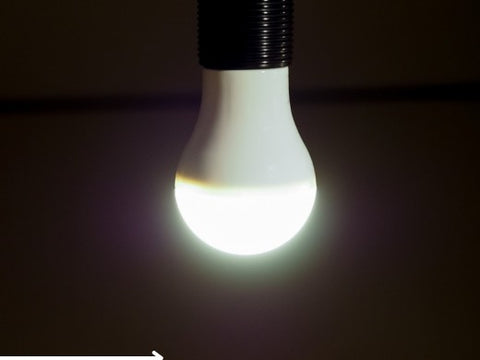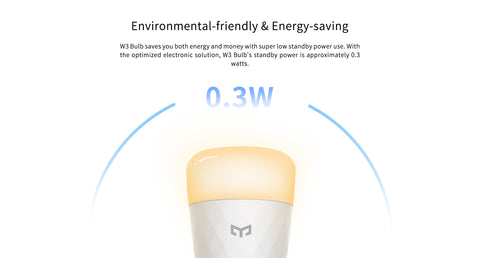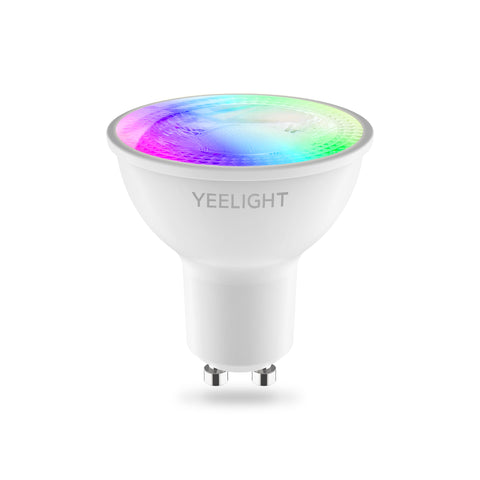Do smart light bulbs consume more electricity? The answer is of course not. Smart bulbs are designed to be energy efficient, using far less power than traditional incandescent bulbs. By utilizing LED technology, smart bulbs can save you money on your electric bill while reducing your impact on the environment.
In this article, we'll dive into the specifics of smart bulb energy consumption, compare it to traditional lighting options, learn how it's designed to work, and how to effectively save energy when using smart bulbs.
What are smart bulbs?

Smart bulbs, such as Wi-Fi-enabled bulbs and Bluetooth-enabled bulbs, integrate seamlessly with your home network, allowing you to control them through a mobile app or home automation center. These connectivity options give you the flexibility to manage your lighting remotely.
With integrated Wi-Fi, Bluetooth, ZigBee or proprietary connectivity, smart bulbs can be programmed to change output patterns. Internet connectivity allows for additional features such as built-in cameras and speakers. You can easily adjust brightness and RGB colors to create the desired ambiance in your space.
How do smart bulbs work?
Smart bulbs work by combining LED technology with smart connectivity to provide users with unprecedented control over their lighting environment. Through a dedicated app or voice commands, users can adjust brightness levels, change color temperature and schedule lighting programs. This versatility not only enhances comfort and ambiance, but also optimizes energy consumption by tailoring lighting to specific needs and times of day.
Do smart light bulbs really save money?
Smart bulbs are designed to be very energy efficient, using far less power than traditional incandescent bulbs. They use 80-90% less power and offer additional features such as dimming and color control.
By utilizing advanced technologies such as dimming, scheduling and motion sensors, smart bulbs can help reduce overall energy consumption. From a long-term perspective, smart bulbs are more cost effective and environmentally friendly, and they offer the following advantages over traditional bulbs:
- Energy efficient: Smart bulbs consume significantly less power than incandescent and CFL bulbs. LED bulbs consume about 10 watts compared to 40-60 watts for incandescent bulbs and 15-20 watts for CFL bulbs.
- Cost Effective: Smart LED bulbs save money over incandescent bulbs because they are energy efficient.LED bulbs use 25% to 80% less energy than incandescent bulbs and last longer. Even in standby mode, smart LED bulbs remain cost-effective.
- Sustainability: By choosing smart bulbs over traditional bulbs, you're not only saving money on your electricity bill, but you're also contributing to environmental sustainability.LED technology has a long lifespan that ensures you're making a lasting investment in both your finances and the planet.
- Advanced features: Smart bulbs offer advanced features such as remote control, scheduling and integration with smart home systems. These features enhance the user experience while optimizing energy use and maximizing savings.
- Longevity: Smart LED bulbs last much longer than traditional incandescent or CFL bulbs, reducing replacement frequency and maintenance costs.
- Energy Savings: Smart bulbs consume less power and operate more efficiently, which can result in significant savings on your electric bill in the long run.
Do smart bulbs use more power?

No. Smart bulbs typically consume less power overall when used intelligently. While they may consume a small amount of standby power to maintain connectivity when turned off, this consumption is insignificant compared to their active use.
Smart power management strategies, such as the use of energy-saving settings and schedulers, can further mitigate any standby power consumption impact.
Do smart bulbs consume power when turned off?
Smart bulbs do consume a small amount of standby power to remain responsive to commands and stay connected to your smart home system. This standby power consumption is usually negligible - typically 0.5 to 1 watt per bulb. However, users can minimize this impact by using a smart power strip or scheduling bulbs to turn off completely when not in use for extended periods of time.
How can I save energy when using smart light bulbs?
To maximize energy savings when using smart bulbs, there are several strategies you can adopt:
Optimize brightness settings
Brightness of smart bulbs can be adjusted on demand to reduce unnecessary energy consumption by using higher brightness where high brightness is needed, lowering the brightness in rest areas, and utilizing the sensor function to automatically adjust the brightness to suit the ambient light.
Use timing and scheduling
The timer and scheduler function of the smart bulb allows you to automatically control the lights according to your daily routine.
By setting the time for the lights to turn on in the morning and turn off at night, and by setting the time for the lights to turn on and off according to your family members' routines, you can avoid forgetting to turn off the lights and ensure that the lights are turned on only when they are needed, thus reducing wasted energy consumption.
Utilizing motion sensors
Installing smart bulbs with motion sensors can avoid forgetting to turn off lights by automatically detecting room occupancy, turning lights on when someone is in the room, and turning them off when no one is in the room; in addition, adjusting the sensitivity of the sensors and the delayed turn-off time of the lights according to the actual usage environment further optimizes the energy-saving effect.
Monitor and analyze power usage
The smart bulb app provides power consumption monitoring and analysis functions. By checking the power consumption of each bulb in real time, it can understand which periods or rooms are using more power, and analyze the historical data to find out the peaks of power consumption and wastage, so as to optimize the power consumption strategy.
Upgrade old luminaires
Upgrading old light fixtures can further improve energy efficiency, even though smart bulbs are already very energy efficient themselves. Using fixtures designed for LEDs can better distribute light and improve luminous efficacy, resulting in lower electricity use.
At the same time, avoiding outdated fixtures can prevent the performance of smart bulbs from being compromised, and upgrading to more modern fixtures can take full advantage of the energy savings of smart bulbs.
Choose efficient smart bulbs
Choosing high-efficiency smart bulbs is the key to energy efficiency. Among the many brands on the market, smart bulbs like Yeelight not only offer a wide range of color and brightness options, but are also perfectly compatible with major smart home platforms. Their advanced energy management features effectively help families save power.
Through these methods, using smart light bulbs not only allows you to enjoy the convenience of a smart home, but also significantly reduces household electricity consumption and achieves energy-saving and environmentally friendly results.
Energy efficient smart light bulbs you can't afford to miss

Featuring advanced LED technology, Yeelight smart bulbs are designed to be highly energy efficient, providing significant savings on electricity bills and optimal lighting for a variety of environments.
They have customizable features that allow users to adjust the brightness and color temperature to meet different needs, whether for relaxation or work.Yeelight smart bulbs integrate seamlessly into the smart home ecosystem, are compatible with Alexa and Google Assistant, and are easy to manage through voice commands or mobile apps.
Their long life and durability reduce replacement frequency and maintenance costs, making them a sustainable lighting solution for the modern home. User reviews indicate that these bulbs not only enhance the lighting experience, but also promote environmental protection through their energy-saving features, garnering high marks from smart home enthusiasts and sustainability-focused users.
Conclusion
Smart lighting systems can significantly reduce energy consumption by using energy-efficient light sources (e.g., LEDs), wireless communication networks, and sensors, with savings ranging from 70% to 90%.
Studies have shown that the energy saving potential of smart lighting systems compared to conventional systems ranges from 17% to 94%, so using smart lighting not only improves the lighting experience, but also promotes sustainable development.










